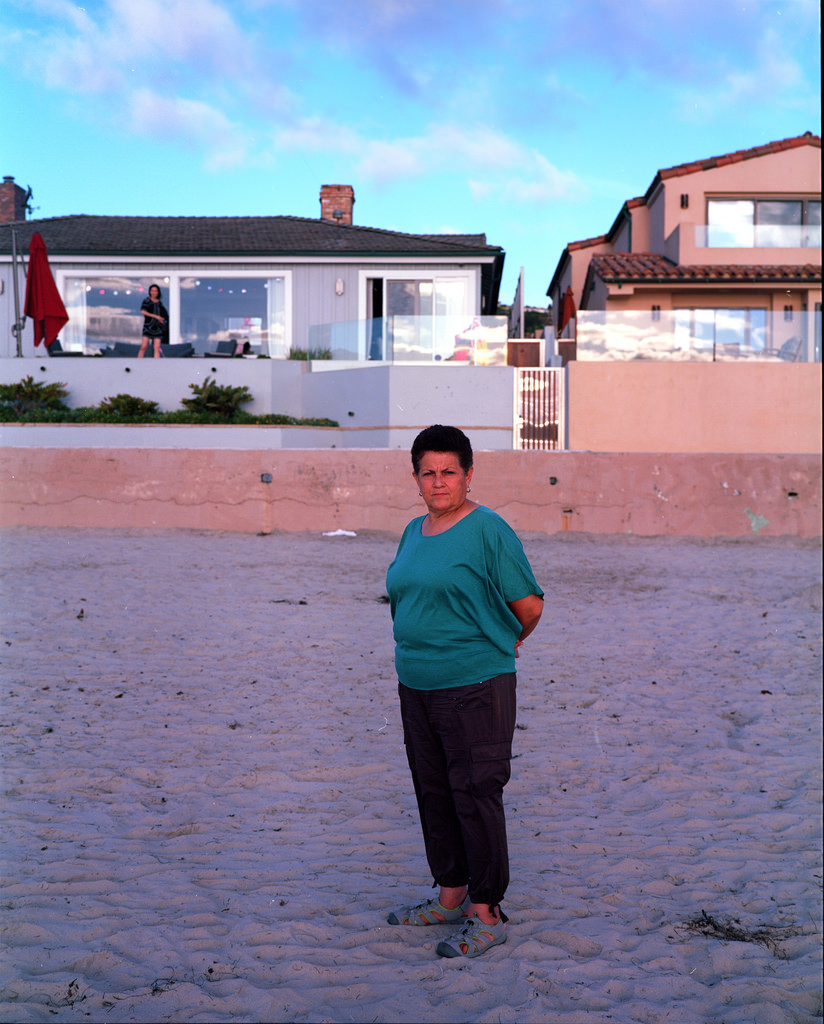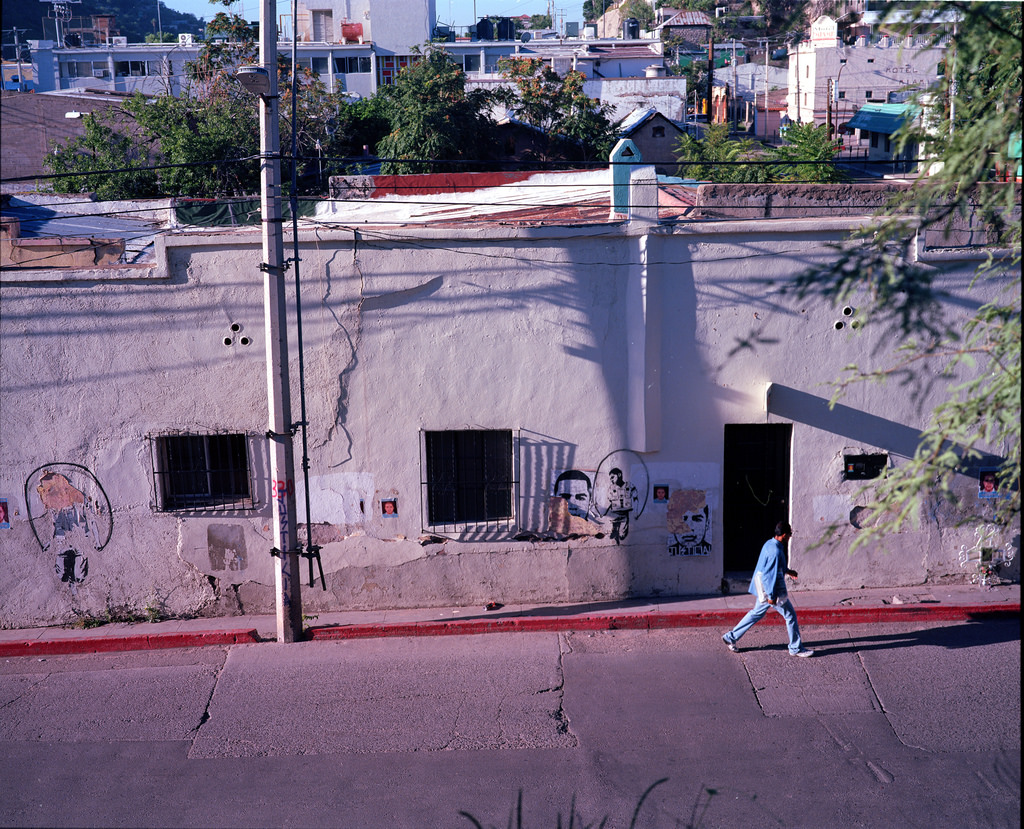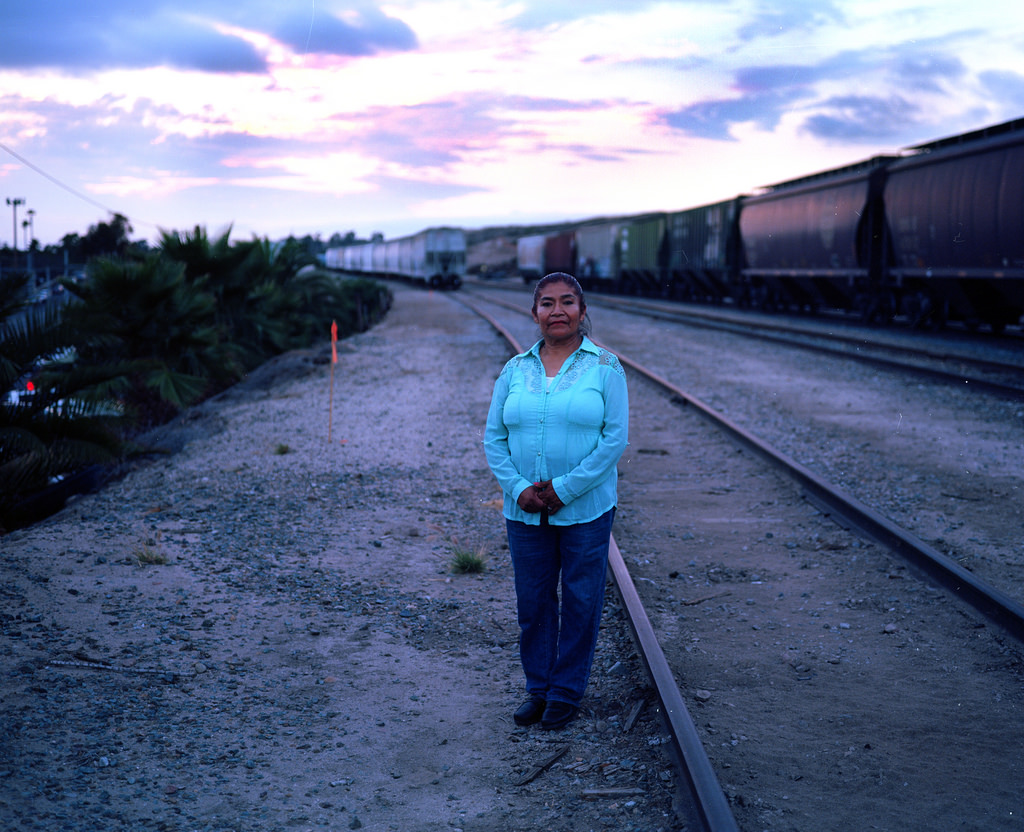“Caminamos La Linea // \\ We Walk the Line” by Jillian Grant
An ongoing project including documentary photographs, filmed interviews and an upcoming book by artist Jillian Grant
TOPIC: TRANSLATIONS

Caminamos La Linea // \\ We Walk the Line explores the multiple truths witnessed by people who occupy the U.S.-Mexico borderlands. The photographs, filmed interviews, and book comprising the exhibition describe my path to understanding what role the physical and psychological borderlands play for those who live in San Diego, CA / Tijuana BC and Nogales, AZ / Nogales SON. As the architect of this compilation of stories, I am building a structure through photography, film, and bookmaking that both represents my grasp on what these multiple realities mean to those participating in the project and myself. The strength and resilience of the participants becomes evident within this framework through their stories.
For two summers I interviewed, photographed, and spent time with friends and co-workers who grew up and live in the borderlands. Twenty-five people volunteered their time, energy, and stories to help me learn about what this border means to them. I interviewed each participant typically for an hour about their life experiences and thoughts on the borderlands, and then I photographed them in a meaningful place of their choosing. A film, book, and large photographs will be exhibited together, layering the stories of the participants in the project and my own personal narrative to create a palimpsest of the histories, experiences, and knowledge of over twenty people who occupy the U.S. - Mexico borderlands.

The three components of this project will represent a space that deconstructs the perceived dichotomy of the U.S.-Mexico border. The raw footage and audio in the film reveal the multiple truths and experiences of people who live in the borderlands. The narrative addresses issues of race, displacement, injustice, and provides a space for participants to share their opinions and stories about what role the U.S.-Mexico border plays in their lives. The book is an accessible and portable object encompassing the audio and photographic narratives of the project. The contents of the book reveal my aesthetic and analytical process in making sense of the stories and experiences I have witnessed. Each person involved in the project has their own designated section in the book where they fill their pages with artifacts and writings that help tell their story.
The content of the project—in the film, photographs, and book—manifests in layers of stories, images, and documents that explore the participant’s relationship with the U.S.-Mexico border and other borderlands they face within their identity. This notion demonstrates itself in the photographs as they expose a fragment of the participant’s story and in the film where they are actually telling parts of their story. The raw, layered, and chaotic aesthetic in the book and film reflect how the borderlands actually affect people’s lives as told in their stories.
Two interviews in the film consist of a mother and daughter—Reyna Delgado Montano and Reyna Delgado Adán—explaining in Spanish how they identifythemselves. Reyna Montano explains that she identifies as Chicana because she comes from Mexican parents and she was born in the United States. Her mother begins by saying that she identifies as Mexican because she was born in Mexico to Mexican parents, but then continues and says that she is also American because the country [U.S.] adopted her. She concludes by identifying as Mexican-American. These accounts parallel each other as the mother and daughter address their respective identities in the photographs below:
Playing the interviews in Spanish and English makes the film only fully accessible to people who know both languages. This decision is purposeful—the people who were interviewed were given the choice of responding in Spanish or English; whatever they felt most comfortable speaking. This enables self-determination and autonomy over how the audience will hear and understand their story. Because most people in the film know both languages, and often had to learn them simultaneously, the viewer is invited to share the same difficult experience of navigating and transgressing language barriers so that they may be more deeply exposed to the participant’s embodied experience.

